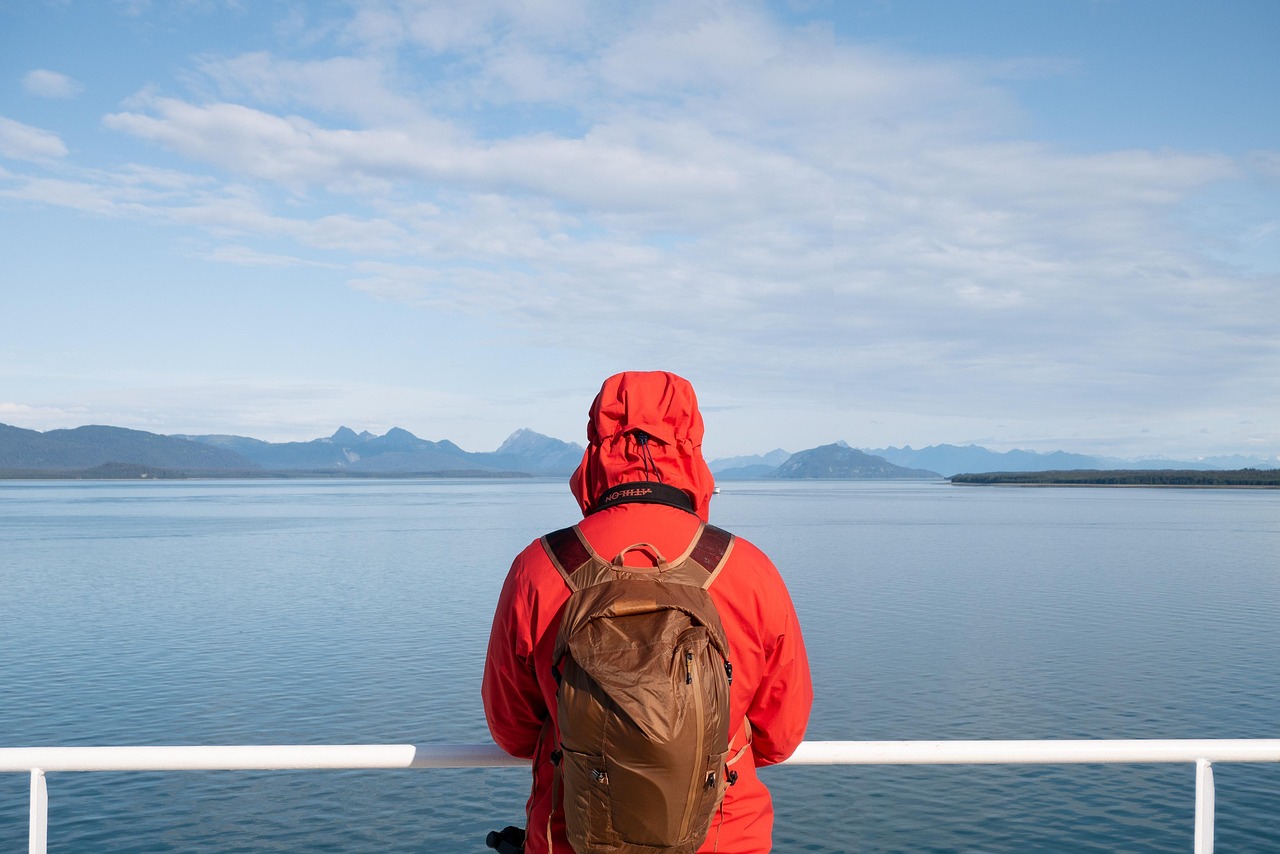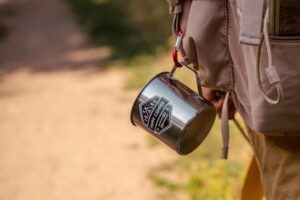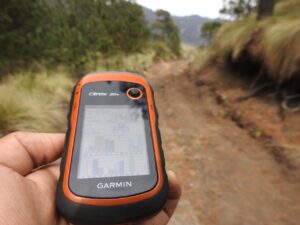Hiking in the rain can be a wonderful adventure if you’re prepared. Many people cancel their outdoor plans when they see rain in the forecast, but with the right gear, rainy hikes can offer unique experiences with cleaner air and fewer crowds on the trails.
You need waterproof layers including a quality rain jacket, water-resistant pants, moisture-wicking base layers, and waterproof hiking boots to stay comfortable during a rainy hike. The key is managing both rain from outside and sweat from inside your clothing.
Your rainy day hiking outfit should consider the temperature too. Summer rain requires different gear than a cold spring shower. Remember that being prepared doesn’t mean overloading yourself with heavy equipment – sometimes embracing a bit of dampness is part of the fun, especially on warmer days when getting slightly wet isn’t uncomfortable.
Essential Outerwear for Rainy Day Hikes
Staying dry is the key to enjoying a hike when the clouds open up. The right rain gear can make the difference between a miserable slog and an amazing outdoor adventure.
Choosing a Waterproof Jacket
A good rain jacket is your first line of defense against wet weather. Look for jackets with a waterproof rating of at least 10,000mm for moderate rain or 20,000mm for heavy downpours. Make sure it has fully sealed seams and waterproof zippers.
Hoods matter a lot! Find one that’s adjustable and has a stiff brim to keep water off your face. Some jackets have hood designs that turn with your head, which is super helpful on the trail.
Don’t forget about ventilation features. Pit zips (underarm vents) are awesome for letting out heat and moisture when you’re working hard uphill. A jacket that’s too hot can make you as wet from sweat as rain would!
Consider the length too – a slightly longer cut will keep more of you dry, especially if you’re wearing a backpack.
Understanding Breathable Fabrics
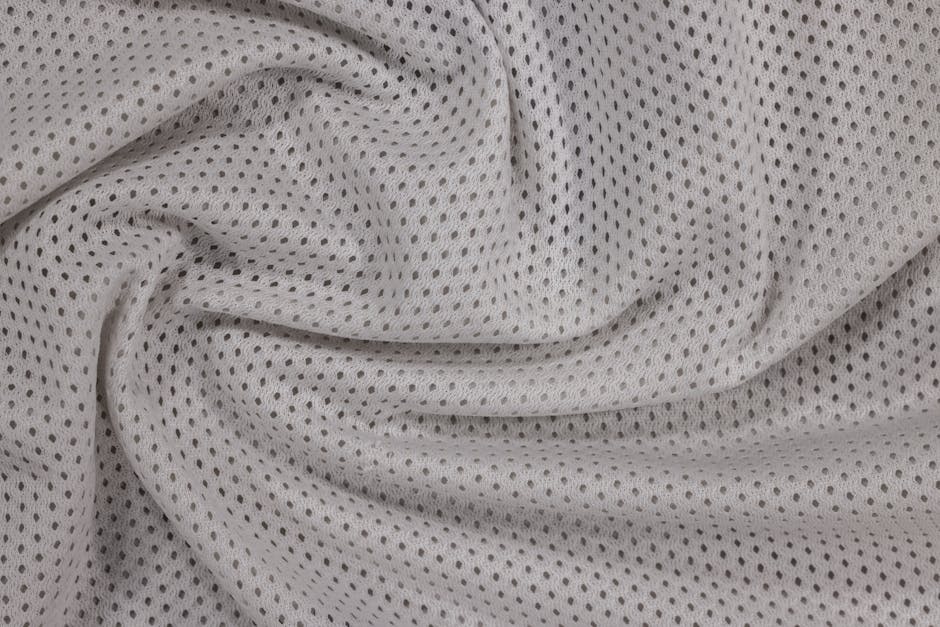
Not all waterproof materials are created equal. The best hiking jackets use breathable membranes like Gore-Tex, eVent, or similar technologies that keep rain out while letting sweat escape.
Look for these common waterproof-breathable ratings:
- 10,000mm/10,000g: Good for light rain and moderate activity
- 20,000mm/20,000g: Great for heavy rain and higher exertion
- 30,000mm/30,000g: Excellent for downpours and intense hiking
The higher the breathability number, the less clammy you’ll feel. This matters a ton when hiking uphill or carrying a heavy pack.
Multiple-layer fabrics offer different benefits. 2-layer constructions are more affordable and packable, while 3-layer designs are more durable for frequent backcountry use.
Don’t be fooled by “water resistant” labels! These items might handle light drizzle but will soak through in steady rain.
Rain Pants and Leg Protection
Wet legs can ruin your hiking experience quickly. Good rain pants should be fully waterproof, not just water-resistant. Look for reinforced areas at the knees and seat for durability.
Side zips are super important! Full-length zippers let you put pants on over boots when the rain starts suddenly. They also provide ventilation when you’re getting too warm.
Consider these features for maximum comfort:
- Adjustable waistbands that work with your hiking pants
- Articulated knees for easier movement
- Boot-compatible ankle closures to keep water from running into your footwear
Lightweight, packable rain pants are worth their weight in gold. They take up little space in your pack but make a huge difference when the skies open up.
For shorter hikes in warm weather, some hikers prefer waterproof gaiters instead of full rain pants. These cover from ankle to knee and keep your feet dry with less bulk.
Layering for Comfort and Warmth
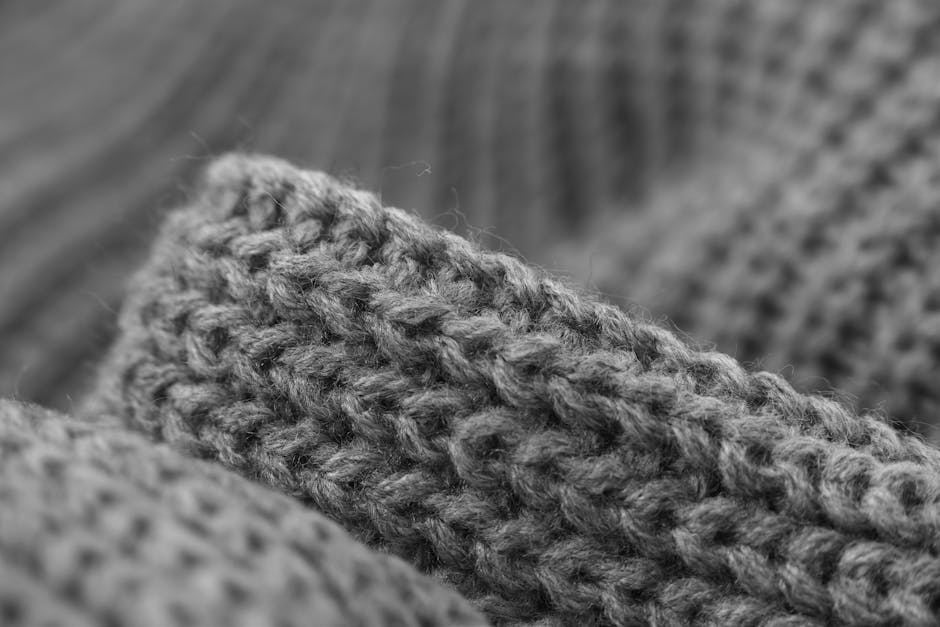
Staying dry and warm on a rainy hike means using the right clothing layers. Smart layering lets you adjust to changing weather and activity levels while keeping rain out and body heat in.
Base Layers That Stay Dry
Your base layer sits directly against your skin and plays a crucial role in moisture management. Never wear cotton as your base layer! When cotton gets wet, it stays wet and can make you dangerously cold.
Instead, choose synthetic materials like polyester or natural fibers like merino wool. These fabrics wick sweat away from your skin and dry quickly.
For rainy day hikes, lightweight or midweight base layers work best. Merino wool is awesome because it:
- Manages moisture effectively
- Resists odors naturally
- Feels soft against skin
- Keeps you warm even when damp
Synthetic options are typically cheaper and dry faster than wool. Look for tops with quarter-zips that let you vent when you get too warm.
Insulating Mid Layers
Your mid layer traps body heat while allowing moisture to escape. Think of it as your temperature regulation system.
Fleece jackets make excellent mid layers for rainy hikes. They insulate even when damp and dry quickly if they get wet. Look for fleece with different weights:
- Lightweight (100-weight) for mild conditions
- Midweight (200-weight) for cooler temperatures
- Heavyweight (300-weight) for cold conditions
Down insulation is warm but loses its insulating properties when wet, making it risky for rainy conditions. Synthetic insulation like PrimaLoft or Thinsulate works better in wet weather.
Consider a vest as your mid layer if you want core warmth without overheating your arms during active hiking.
When to Wear Fleece or Wool

Choosing between fleece and wool depends on the conditions and your personal comfort preferences.
Fleece is best when:
- You need something that dries extremely quickly
- You’re on a budget
- You want maximum warmth for minimum weight
- Temperatures are moderate to cold
Wool excels when:
- You need odor resistance for multi-day hikes
- Temperature regulation is important
- You want natural fibers against your skin
- Conditions are variable
For truly cold and rainy conditions, consider layering both! A thin wool base layer topped with a fleece mid layer gives you excellent insulation.
Remember that your layering strategy should be flexible. Pack extra layers so you can adjust as conditions change throughout your hike.
Footwear and Sock Selection
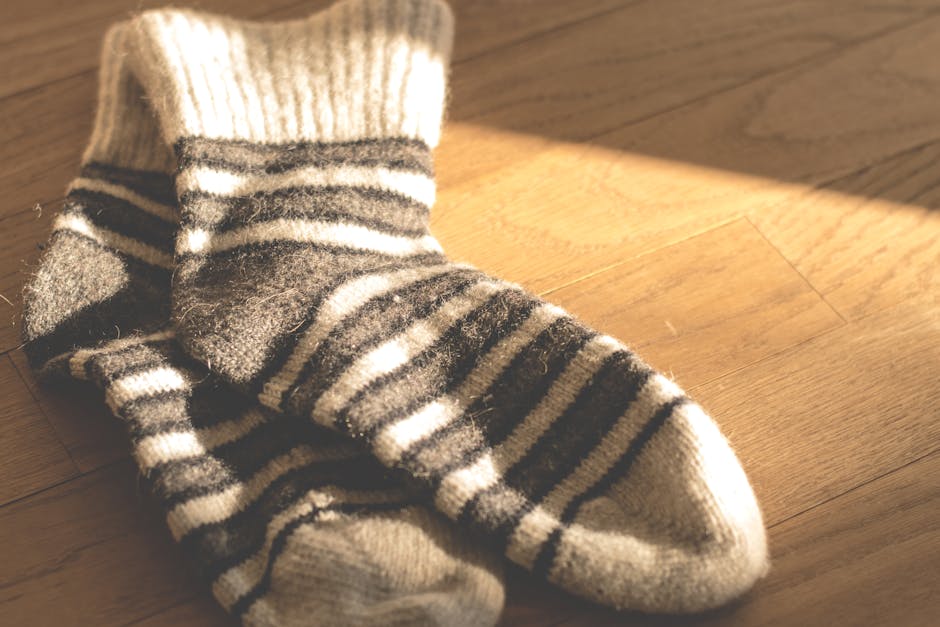
Keeping your feet dry and comfortable is crucial for an enjoyable rainy hike. The right combination of footwear and socks can make all the difference between a miserable experience and a fun adventure in wet conditions.
Waterproof Hiking Boots
Waterproof boots are your first line of defense against wet trails. Look for boots with Gore-Tex or similar waterproof membranes that keep water out while letting your feet breathe.
Mid to high-cut boots offer better ankle protection and keep more water from splashing in. Make sure they have deep lugs on the soles for good traction on slippery surfaces.
Break in your boots before a rainy hike to prevent blisters. Even waterproof boots can get overwhelmed in heavy rain or deep puddles, so have realistic expectations.
Some hikers prefer quick-drying trail runners for warm weather rain hikes. These won’t keep your feet dry, but they drain and dry faster than waterlogged boots.
Best Socks for Wet Trails
Wool socks are your best friends for rainy hikes. They insulate even when wet and don’t get stinky like cotton socks do.
Merino wool is especially good because it’s soft, not itchy, and regulates temperature well. Pack an extra pair to change into if your feet get soaked.
Some hikers use a two-sock system: a thin liner sock under a thicker wool sock. This reduces friction and helps prevent blisters when your feet get wet.
Waterproof socks are another option for light rain. They can keep your feet dry in mesh boots or trail runners, though they might feel less breathable on hot days.
Avoid cotton socks at all costs! They hold moisture, cause blisters, and can make your feet cold.
Gaiters for Extra Protection
Gaiters are fabric shields that cover the gap between your pants and boots. They prevent water from running down your legs into your boots.
Low gaiters cover just your ankles, while high gaiters extend up to your knees. The higher versions offer more protection in serious rain or when walking through wet brush.
Look for gaiters with sturdy underfoot straps and water-resistant materials. Some have waterproof zippers for easy on/off.
Gaiters also keep mud, debris, and small rocks out of your boots. This is super helpful on messy, wet trails where you might be splashing through puddles.
They’re lightweight and pack small, making them worth bringing even if you only need them occasionally during your hike.
Accessories for Wet Weather Hikes
The right accessories can make or break your rainy hiking experience. They protect vital gear and keep key body parts dry and comfortable even in downpours.
Hats and Gloves for Rain
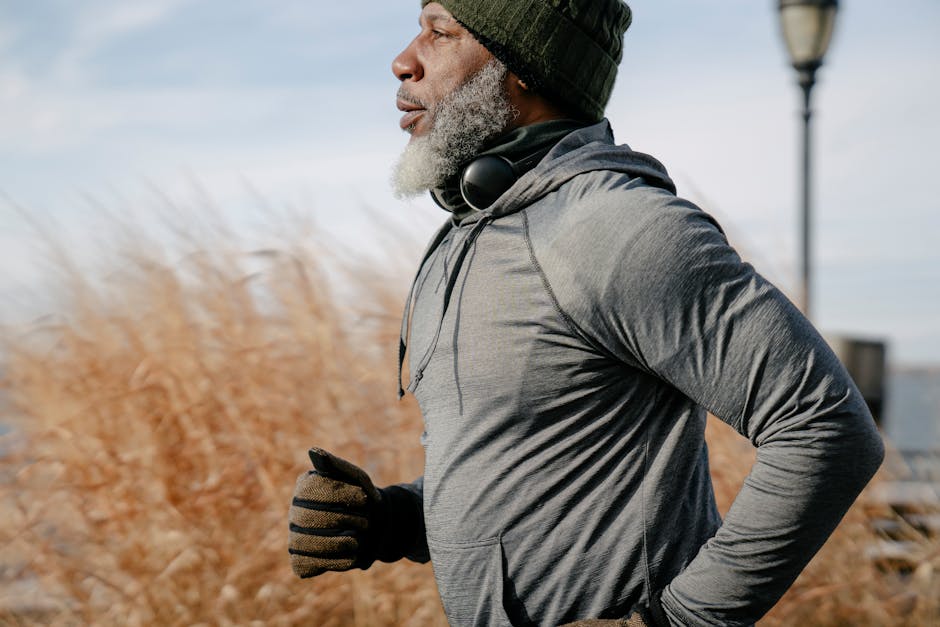
A good waterproof hat is essential for rainy hikes. Look for wide-brimmed options with water-resistant materials that keep rain off your face and neck. Baseball caps work in light rain but won’t protect your neck.
Best rain hat features:
- Adjustable chin strap to prevent wind from taking it
- Quick-drying fabric
- Packable design that springs back to shape
Waterproof gloves are often overlooked but super important. When your hands get wet and cold, everything becomes harder. Choose gloves with waterproof outer shells and moisture-wicking inner linings.
Thin neoprene gloves work great for moderate conditions. For colder rainy hikes, consider waterproof gloves with insulation. Many hikers prefer gloves with touchscreen compatibility so you can use your phone without exposing your hands.
Rain Covers for Backpacks
Backpack rain protection options:
- Dedicated rain covers (usually the best option)
- Pack liners (large waterproof bags that line the inside)
- Dry bags for individual items
Your backpack holds everything you need, so keeping it dry is crucial. Most backpacks aren’t fully waterproof on their own.
Rain covers slip over your entire pack and typically have elastic edges that secure them in place. Buy one sized specifically for your backpack’s volume. Many covers come with small storage pouches that make them easy to keep handy.
Some hikers use trash compactor bags as budget-friendly pack liners. They’re surprisingly effective! For extra protection, use both a rain cover and waterproof stuff sacks for especially important items like electronics and spare clothes.
Umbrellas vs. Ponchos
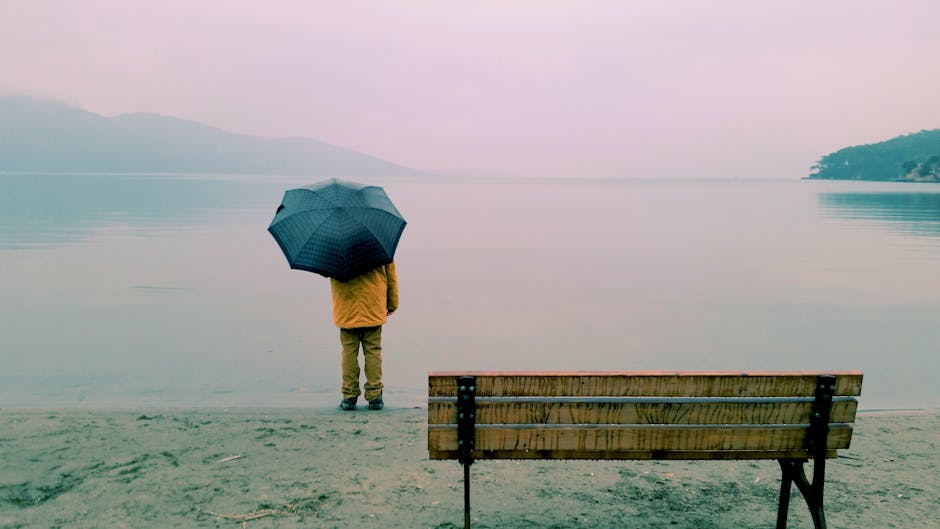
The umbrella versus poncho debate is alive and well among hikers. Both have pros and cons depending on your hiking style and the conditions.
Hiking umbrellas are gaining popularity for good reason. They keep your upper body dry while allowing better ventilation than rain jackets. Look for models with hands-free attachments that connect to your backpack straps.
Umbrellas work best on maintained trails without heavy wind. They also provide shade on trails that suddenly clear up after rain.
Ponchos offer more coverage, protecting both you and your backpack. They’re typically lightweight, packable, and inexpensive. The downside? They can feel hot and limit your movement somewhat.
Some hikers carry both: using the umbrella for light rain and switching to a poncho during downpours. Whatever you choose, make sure it’s easy to pack and deploy quickly when clouds gather.
Choosing the Right Materials and Fit
The secret to staying comfortable on a rainy hike lies in what you wear and how it fits. Your clothing choices can make the difference between an enjoyable adventure and a miserable experience in wet conditions.
Avoiding Cotton in Wet Conditions
Cotton is your enemy when hiking in the rain. It soaks up water like a sponge and takes forever to dry. When wet, cotton loses all insulating properties and can actually make you colder – outdoor enthusiasts call it “death cloth” for a reason!
Instead, opt for:
- Wool (especially merino)
- Polyester
- Nylon
- Other synthetic blends
These materials maintain some insulating properties even when damp. Merino wool is especially awesome because it stays warm when wet and doesn’t get stinky like synthetics can after multiple wears.
Remember that this applies to ALL your clothing – even your underwear and socks should be made of non-cotton materials when hiking in wet weather.
Finding the Perfect Fit
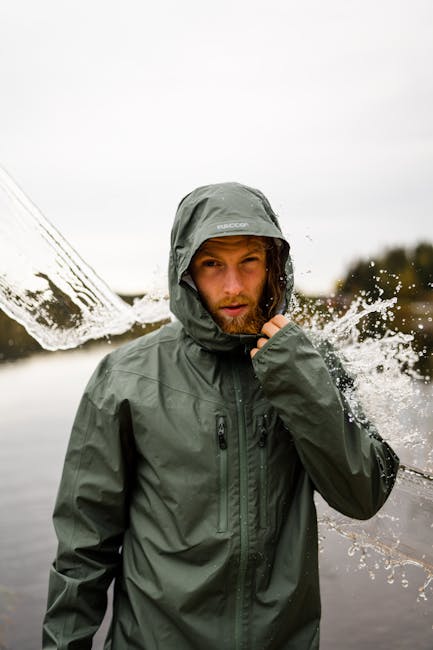
Look for these features:
Your rain gear should be roomy enough to layer underneath but not so baggy that it catches on branches or creates billowing air pockets.
- Adjustable cuffs that can tighten around your wrists
- Pants with cinchable ankles to keep water from running into your boots
- A hood that turns with your head and has a brim to keep rain off your face
Pants should allow full range of motion for high steps on trails. Many hiking pants feature articulated knees that bend naturally with your body.
Try on gear while mimicking hiking movements – reach up, squat down, and take big steps to ensure nothing binds or rides up uncomfortably.
Quick-Dry and Moisture-Wicking Fabrics
Your base layers need to pull sweat away from your skin while mid and outer layers should repel external moisture. This combination keeps you dry from both the inside and outside.
Look for terms like:
- Moisture-wicking
- DWR (Durable Water Repellent)
- Quick-dry
- Breathable waterproof
Modern technical fabrics like Polartec, Gore-Tex, and eVent balance waterproofing with breathability. These fabrics let sweat escape while keeping rain out.
For base layers, lightweight merino wool or synthetic shirts work great. They dry quickly if they get wet and continue to insulate. Mid-layers should focus on insulation that works when damp, like fleece or synthetic puffy jackets.

